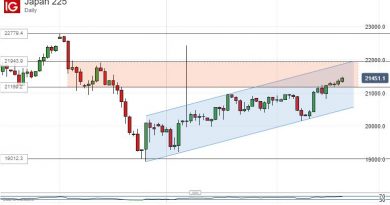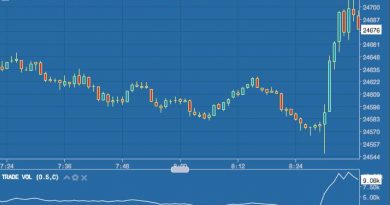Trading Range Definition When It Occurs How To Use and Example
Trading Range: Definition, When It Occurs, How To Use and Example
What Is a Trading Range?
A trading range occurs when a security trades between consistent high and low prices for a period of time. The top of a security’s trading range often provides price resistance, while the bottom of the trading range typically offers price support.
Key Takeaways
– Trading range refers to the difference between the high and low prices in a given trading period.
– Range-bound trading is characterized by prices staying in a definable range over time.
– A trading range is characterized by both a support price and a resistance price, between which the price tends to fluctuate.
– Traders use technical indicators, such as volume and price action, to enter or exit a trading range.
Understanding Trading Ranges
When a stock breaks through or falls below its trading range, it usually means there is momentum building. A breakout occurs when the price of a security breaks above a trading range, while a breakdown happens when the price falls below a trading range. Breakouts and breakdowns are more reliable when accompanied by large volume, suggesting widespread participation by traders and investors.
Many investors look at the duration of a trading range. Large trending moves often follow extended range-bound periods. Day traders frequently use the trading range of the first half-hour of the trading session as a reference point for their intraday strategies. For example, a trader might buy a stock if it breaks above its opening trading range.
Those interested in learning more about trading ranges and other financial topics may want to consider enrolling in one of the best technical analysis courses currently available.
Ranges and Volatility
Since price volatility is seen as equivalent to risk, a security’s trading range is a good indicator of relative riskiness.
A conservative investor prefers securities with smaller price fluctuations compared to those susceptible to significant gyrations. Such an investor may prefer to invest in stable sectors such as utilities, healthcare, and telecommunications, rather than cyclical (or high-beta) sectors like financials, technology, and commodities. Generally, high-beta sectors may have wider ranges than low-beta sectors.
Trading Range Strategies
Range-bound trading is a trading strategy that seeks to identify and capitalize on stocks trading in price channels. After finding major support and resistance levels and connecting them with horizontal trendlines, a trader can buy a security at the lower trendline support and sell it at the upper trendline resistance.
Support and Resistance
If a security is in a well-established trading range, traders can buy when the price approaches support and sell when it reaches resistance. Technical indicators, such as the relative strength index (RSI), stochastic oscillator, and commodity channel index (CCI), can be used to confirm overbought and oversold conditions when price oscillates within a trading range.
For example, a trader could enter a long position when the price of a stock is trading at support, and the RSI gives an oversold reading below 30. Alternatively, the trader may decide to open a short position when the RSI moves into overbought territory above 70. A stop-loss order should be placed just outside the trading range to minimize risk.
Breakouts and Breakdowns
Traders can enter in the direction of a breakout or breakdown from a trading range. To confirm the move is valid, traders should use other indicators, such as volume and price action.
For instance, there should be a significant increase in volume on the initial breakout or breakdown, as well as several closes outside the trading range. Instead of chasing the price, traders may want to wait for a retracement before entering a trade. For example, a buy limit order could be placed just above the top of the trading range, which now acts as a support level. A stop-loss order could sit at the opposite side of the trading range to protect against a failed breakout.
Example of a Trading Range
In this chart, a trader might have noticed that the stock was starting to form a price channel in late November and early December.
After the initial peaks were formed, the trader may have started placing long and short trades based on these trendlines, with a total of three short trades and two long trades along the resistance and support levels, respectively. The stock does not yet indicate a breakout from either trendline, which would mark an end to the range-bound trading strategy.



